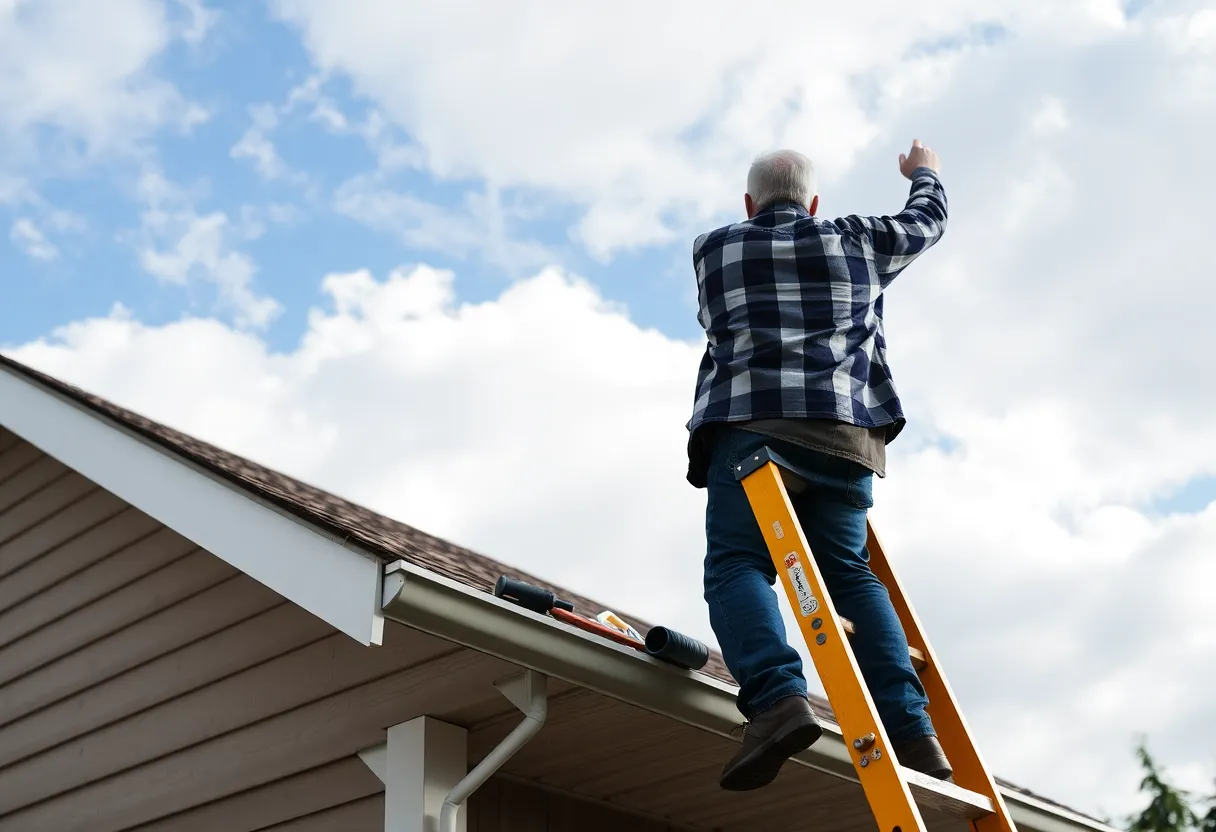

A homeowner carefully inspecting their roof for any storm damage.
Want to target the right audience? Sponsor our site and choose your specific industry to connect with a relevant audience.
Prominent brand mentions across targeted, industry-focused articles
High-visibility placements that speak directly to an engaged local audience
Guaranteed coverage that maximizes exposure and reinforces your brand presence
Interested in seeing what sponsored content looks like on our platform?
May’s Roofing & Contracting
Forwal Construction
NSC Clips
Real Internet Sales
Suited
Florida4Golf
Click the button below to sponsor our articles:
Sponsor Our ArticlesAfter a severe storm, inspecting your roof becomes crucial for maintaining the structural integrity of your home. Understanding how to properly assess the condition of your roof can save you time and money in repairs down the line. This guide will walk you through a systematic approach to inspecting your roof after a storm.
Start by examining the roof for any apparent damage. Look for missing shingles, dents, or dislodged roof tiles. Pay attention to any areas of the roof that appear sagging or misshapen. These can indicate underlying issues that need immediate attention.
Check your gutters and downspouts. Ensure they are free from clogs and not detached from the roof. Rainwater should flow freely. Look for signs of rust or other deterioration which could lead to leaks.
The flashing around chimneys, vents, and skylights is particularly susceptible during storms. Look for any cracks, gaps, or rust. If the flashing is compromised, it can lead to water penetration.
Inspect the interior of your home, particularly in attic spaces, for water stains or mold. These are critical red flags indicating potential leaks.
Before you begin the inspection, ensure that the weather is stable. Avoid inspecting during rain or high winds. Check your ladder for stability, and ensure it is placed on solid ground.
When inspecting your roof, wear appropriate safety gear. A helmet, sturdy shoes, and gloves are essential. Employ a safety harness if you’ll be working on sloped roofs.
Gather the necessary tools for your inspection:
Begin your inspection from the ground. Look for standing debris, broken branches, or any debris near the roof. Take note of any roof sections that seem severely affected.
Once the ground is clear, position your ladder securely at a safe angle. Ascend cautiously, maintaining three points of contact. Once on the roof, stay in the center of the roof to maintain balance.
Walk carefully across your roof, examining each section thoroughly. Look for:
Valleys will collect rainwater; inspect them for blockages. Ensure they are not filled with leaves or dirt, which could lead to overflow. Similarly, check the eaves for signs of decay.
Examine the roof for mold or algae, especially in shaded areas. While not always structurally damaging, they can lead to more significant issues if left unaddressed.
Keep a detailed record of your inspection. Take photographs to document any issues. This will not only help you remember specific problems but could also be useful for discussing repairs with professionals.
If you identify significant damage such as missing sections, structural concerns, or widespread leaks, it’s vital to contact a roofing professional. DIY repairs in severe cases can lead to more extensive damage if not addressed correctly.
Regardless of the severity, consult your homeowner’s insurance policy. Some policies cover storm damage, and having documentation will be beneficial for a claim.
After any storm, regular inspections should become a routine. Aim to check your roof at least twice a year. Keep an eye out for early signs of wear and tear.
Clogged gutters can cause overflow and damage to your roof. Clean them thoroughly post-storm to avoid further issues.
Regularly trim trees near your home to prevent branches from falling during storms. This preemptive measure can protect your roof from future damage.
Effectively inspecting your roof after a storm is a vital task for maintaining your home’s integrity. By staying vigilant and understanding what to look for, homeowners can prevent costly repairs and ensure their roofs remain in good condition. Always prioritize safety, and don’t hesitate to call a professional for issues beyond your capability.
News Summary Emanuel Planco, a 23-year-old inmate who recently escaped from custody, was arrested in…
News Summary In Beaufort County, South Carolina, 43 rhesus macaques escaped from the Alpha Genesis…
News Summary Residents in South Carolina, particularly around Myrtle Beach, are facing dire conditions as…
News Summary In a significant event marking the return of firing squad executions in the…
News Summary In a remarkable display of talent, the South Carolina Gamecocks secured their third…
News Summary As spring unfolds in Greenwood, gardeners are encouraged to take advantage of the…